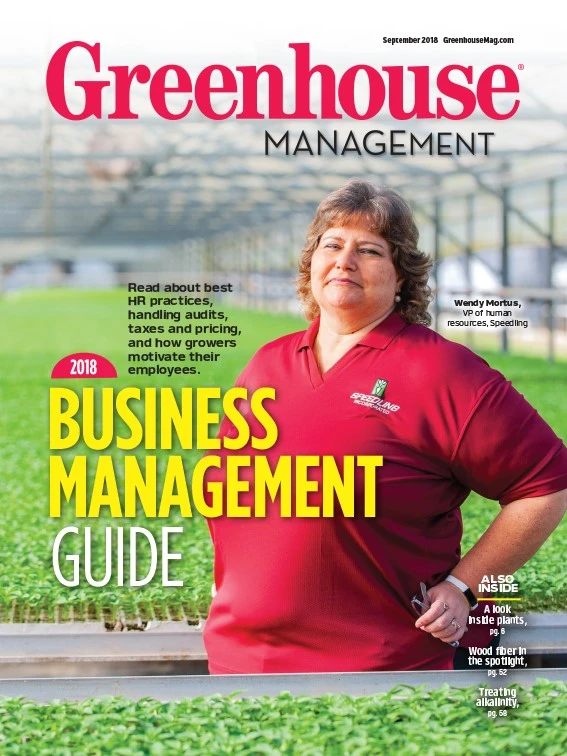
Profits are not only dollars to the bottom line in a given month or quarter. Profits can also be measured in terms of research, education and knowledge that pay dividends for years afterwards. With the right tools, universities educate students and conduct the research that makes the future greener for the horticulture industry in more ways than one.
At Clemson University’s Biosystems Research Complex in Clemson, South Carolina, greenhouse manager Taylor Martin oversees space used for a large variety of crops, including poinsettias, tomatoes, tobacco, cotton, peach trees, weeds and turfgrass. Every day of the year, he works to improve these crops’ growing conditions using 1,000-watt metal halide lights from PARsource.
The complex has been using PARsource supplemental lighting since the early 2000s, says Martin, who began in his role two years ago. “Most all of our greenhouses have grow lights in them, so [on] cloudy days or even in the wintertime when we need longer day length, we use them,” he says. “It’s been working out really well for us.”
The lights run every day of the week in most of the greenhouses, Martin says. They are on light sensors, so if the natural sunlight levels fall below a certain point on a cloudy day, the lights will turn on. Light levels are also adjusted to accommodate the needs of horticulturists, agriculturists and turfgrass scientists from the university who rent out greenhouse space at the Biosystems Research Complex.
Poinsettias are set to different light conditions throughout the season, Martin says, adding that he recently worked with a student who had been growing poinsettias under long day conditions in August to prevent the plants from flowering.
“Their grow lights come on below — I think it was 200 watts per meter squared,” Martin says. “The time period starts two hours before dusk, and then it shuts off at 12 midnight. So, from dusk until midnight, their grow lights are burning just so that the plants won’t flower.” Later in the year, Martin says, the growers will switch to a blackout cloth to get shorter days.
Martin says he believes that in the nearly 15 years the Biosystems Research Complex has been open, it has been working with PARsource. In the two years he has been working with PARsource national sales manager Jud McCall, Martin says the lighting supplier has been great to work with. “All I do is shoot him an email, and he’s super fast,” he says. “It’s been really easy working with him.”

Explore the September 2018 Issue
Check out more from this issue and find your next story to read.
Latest from Greenhouse Management
- Super Charged Moon Juice from Moon Valley Nurseries now available nationally
- 2025 Proven Winners Horticulture Scholarship applications now open
- How to improve inventory and shipping management in the greenhouse
- Leading Women of Horticulture: Anna Ball, Ball Hort, and Terri McEnaney, Bailey Nurseries
- GM CEA HERB Part 2: A guide to increasing the sowing density of culinary herbs
- GM CEA HERB Part 1: Best practices for producing culinary herbs in controlled environments
- USDA fires experts on invasive pests, including Asian citrus psyllid, chilli thrips
- CEA Alliance celebrates bipartisan introduction of Supporting Innovation in Agriculture Act





